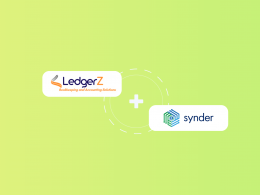When running a business, it’s important to understand the value that each customer brings to your company. This value is commonly known as Lifetime Value or LTV, which is the amount of revenue a customer generates for your business over the course of their relationship with you. Knowing your customer’s LTV is essential for making informed business decisions, such as how much to spend on marketing, pricing strategies, and even which products or services to offer.
Grab this guide to learn more about how to calculate this important business metric, why it’s vital for businesses to do it and what software can help you automate this daunting process. Keep reading!
How to Calculate LTV
To calculate LTV, you need to take into account several variables. The formula for calculating Customer Lifetime Value is:
Customer Lifetime Value = Customer Value x Average Customer Lifespan
In other words, first, you need to calculate the average purchase value of the customer and then multiply that number by the average number of purchases.
This calculation can be complex and time-consuming, which is where an LTV calculator comes in handy. An LTV calculator is a tool that can simplify the process of calculating LTV by automating the calculation using a set of predefined formulas and algorithms.
An LTV calculator works by taking customer data, such as purchase history, transactional data, and customer behavior, and using it to calculate the potential revenue that a customer will generate over their lifetime. The calculator also takes into account various factors, such as customer retention rate, customer acquisition cost, and discount rate, to arrive at an accurate LTV figure.
Benefits of using an LTV calculator
The benefits of using an LTV calculator are numerous. By accurately calculating your customers’ LTV, you can determine the true value of each customer, which can help inform business decisions such as how much to spend on customer acquisition and retention. Accurate LTV calculations can also help businesses identify which customers are most profitable, which products or services are the most successful, and which marketing campaigns are the most effective. Or if you see that your LTV is higher than your customer acquisition cost, it makes sense to invest more in marketing and customer acquisition. On the contrary, if LTV is lower than your customer acquisition cost, it may be time to re-evaluate your pricing strategy or customer retention programs.
Tools for calculating LTV
Using an LTV calculator is simple and straightforward. To get started, you may be required to input various customer data, such as purchase history and transactional data. You’ll also need to input data such as customer acquisition cost and retention rate. Once all of the data is entered, the calculator will automatically generate an accurate LTV figure.
There are several LTV calculator tools available on the market, some of the most popular ones being HubSpot’s LTV Calculator, or ChartMogul’s LTV Calculator.
But there’s one tool which will spare you the burden of manual data entry. It’s Synder, a comprehensive accounting software, with its hot feature Synder Business Insights, which will take care of all your business analytics, including LTV. Based on the information Synder automatically takes from the sales channels and payment gateways you’re using, it generates various customer reports like LTV reports, reports on top performing customers and least performing customers, new and returning customers, top refunded customers, returning customer rate, as well as other actionable reports on sales, products, and payment fees, which will help you keep track of important business KPIs and make data-driven decisions impacting your business performance.
You can learn more about this powerful Synder’s functionality in a 15-day free trial or book office hours to talk to a support specialist.
Wrapping up
To recap, understanding your customers’ LTV is crucial for making informed business decisions. Automating LTV calculation can significantly simplify this process and ensure its accuracy, which will give businesses a chance to introduce necessary adjustments to their marketing spend and pricing strategies. By calculating LTV, companies can identify their most valuable customers, determine the most profitable products or services, and make data-driven decisions about customer acquisition and retention.
You might want to learn more about why data-driven analytics is of interest to companies.







.png)
